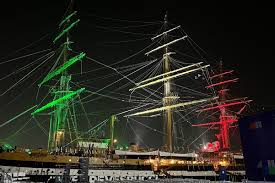
The Indian Patent Office’s decision to grant the patent for Gilead’s Hepatitis C treatment drug, Sovaldi, has attracted much criticism. This change of heart — given the rejection of the same patent application in January last year — reflects a broader trend toward a more stringent Intellectual Property Right (IPR) regime. Rather than fight an obviously losing battle for patent rejections, a more constructive strategy would be to explore access expansion mechanisms that do not necessarily impinge on IPR.
The Indian IPR framework has been facing intense investigation from the US. In fact, the country’s anti-evergreening policy under Section 3(d) of the Indian Patent Act — the primary basis of pre-grant oppositions to the Sovaldi case — is a major bone of contention. It was listed as a problem issue in both the 2014 and 2015 editions of the US Trade Representative’s Special 301 Report — the 2015 report states that, “The United States continues to have concerns that Section 3(d) of India’s Patents Act, as interpreted, may have the effect of limiting the patentability of potentially beneficial innovations”. With the US-India bilateral relationship growing stronger, such patent decisions are expected to be the norm rather than an exception. Negotiations under the mega regional trade agreement, Regional Comprehensive Economic Partnership (RCEP), also reveal that South Korea and Japan are pressing for TRIPS-plus conditions. This means the Indian pharmaceutical sector must now navigate through an increasingly stricter system.
When India joined the World Trade Organization in 1995, the country had to reverse its anti-TRIPS position and bring medicines under the patent domain. Despite the re-structuring, the Indian patent system has continued to support its indigenous generic manufacturing industry through certain provisions. The strict anti-evergreening helped deter successive patents on minor enhancements of existing drugs. Issues of access were also prioritised through the extensive range of compulsory licensing conditions. For India — one of the world’s largest generic drug suppliers — this is another such juncture where the practical approach would be to seek creative solutions to retain its pro-public health stance in spite of ceding to the mounting external pressure.
Efforts towards access expansion must leverage the new range of developing country-friendly instruments like voluntary licensing (VL).Unlike the 1990s when the ‘Big Pharma’ companies refused outright to offer subsidised antiretroviral (ARV) treatment in developing countries, today they must take into account access concerns. Gilead’s own VL arrangement is a consequence of this shift.The US-based pharmaceutical giant has licensed out Sovaldi production to 11 Indian generic drug companies. While the drug is sold for $84,000 per patient in the US, the Indian licensees will be able to supply the generic version for $900, with an additional 10% royalty in 101 low and middle-income countries. Thus, in terms of price, the Sovaldi patent in India makes little difference for Indian consumers and patients residing in the other 100 listed countries. This is not to say that VLs are a cure-all solution — at least not yet. Access expansion through VLs requires a more in-depth investigation of the license terms.
Gilead’s controversial anti-diversion programme is a case in point.The programme allows Gilead and its distributors to track patient-related information through the QR code printed on the medicine bottles. This raises questions regarding patient confidentiality — especially related to sensitive information such as HIV status and history of drug abuse. Another concern is that of exclusion — because access to the drugs is contingent upon proof of identification, a large number of patients from marginalised communities like refugees, injecting drug users and migrants may not be able to get treatment.
Geographical restrictions imposed by licensors can hinder access for a large portion of low-income patients. Gilead’s licensing agreement for Sovaldi excludes sale to 50 middle-income countries, which are home to about 49 million people living with the Hepatitis C Virus (HCV). If the objective of the VLs is to ensure access to affordable drugs for the poorest patients, Gilead Sciences must dilute these restrictions. The assumption that middle-income countries have the ability to fully fund these treatments has often been proved erroneous. Excluded middle-income countries generally experience high income inequality and only a miniscule section can afford the non-discounted variants. Most HCV patients in these countries belong to vulnerable communities who suffer from social stigma and are largely ignored by their governments. Apart from restrictions on the final product, VLs generally include restrictions on the sale and purchase of the Active Pharmaceutical Ingredient (API) — the raw material. This creates further barriers to access in the excluded countries.
Pricing is also a concern — generic manufacturers under VLs tend to market drugs at relatively higher prices in comparison to those who manufacture without VLs. Analysis of drug-wise data conducted by Medecins Sans Frontieres (MSF) shows that Aspen Pharma care under a VL with GlaxoSmithKline (GSK) markets a second-line ARV medication at $69 per patient per year. Other generics companies sell the same drug at much lower prices: Cipla sells it at $51 for the same dose, Aurobindo at $54, and Hetero at $53.There have, however, been exceptions: Gilead, in 2006, sold its ARV drug at significantly lower prices than those offered by other generic companies. This played a central role in bringing down prices across manufacturers.
The broader issue here is not to lay blame on one specific stakeholder or another. It is to identify new channels of improving access that take into account the changing political landscape. Because the VL approach provides a way around the traditional ‘access’ versus ‘protection’ impasse, it emerges as a prime candidate for future access expansion. However, this will increasingly hinge upon the manner in which these licenses are rolled out. While not as captivating as a patent tug-of-war, scrutinising this process would undoubtedly be a more productive effort.
Courtesy ORF– Navigating the IPR maze
Author Profile
- India Writes Network (www.indiawrites.org) is an emerging think tank and a media-publishing company focused on international affairs & the India Story. Centre for Global India Insights is the research arm of India Writes Network. To subscribe to India and the World, write to editor@indiawrites.org. A venture of TGII Media Private Limited, a leading media, publishing and consultancy company, IWN has carved a niche for balanced and exhaustive reporting and analysis of international affairs. Eminent personalities, politicians, diplomats, authors, strategy gurus and news-makers have contributed to India Writes Network, as also “India and the World,” a magazine focused on global affairs.
Latest entries
 India and the WorldNovember 26, 2025G20@20: Africa’s Moment – The Once and Future World Order
India and the WorldNovember 26, 2025G20@20: Africa’s Moment – The Once and Future World Order DiplomacyOctober 4, 2025UNGA Resolution 2758 Must Not Be Distorted, One-China Principle Brooks No Challenge
DiplomacyOctober 4, 2025UNGA Resolution 2758 Must Not Be Distorted, One-China Principle Brooks No Challenge India and the WorldJuly 26, 2025MPs, diplomats laud Operation Sindoor, call for national unity to combat Pakistan-sponsored terror
India and the WorldJuly 26, 2025MPs, diplomats laud Operation Sindoor, call for national unity to combat Pakistan-sponsored terror India and the WorldJuly 25, 2025When Fire Ends, Diplomacy Begins
India and the WorldJuly 25, 2025When Fire Ends, Diplomacy Begins







